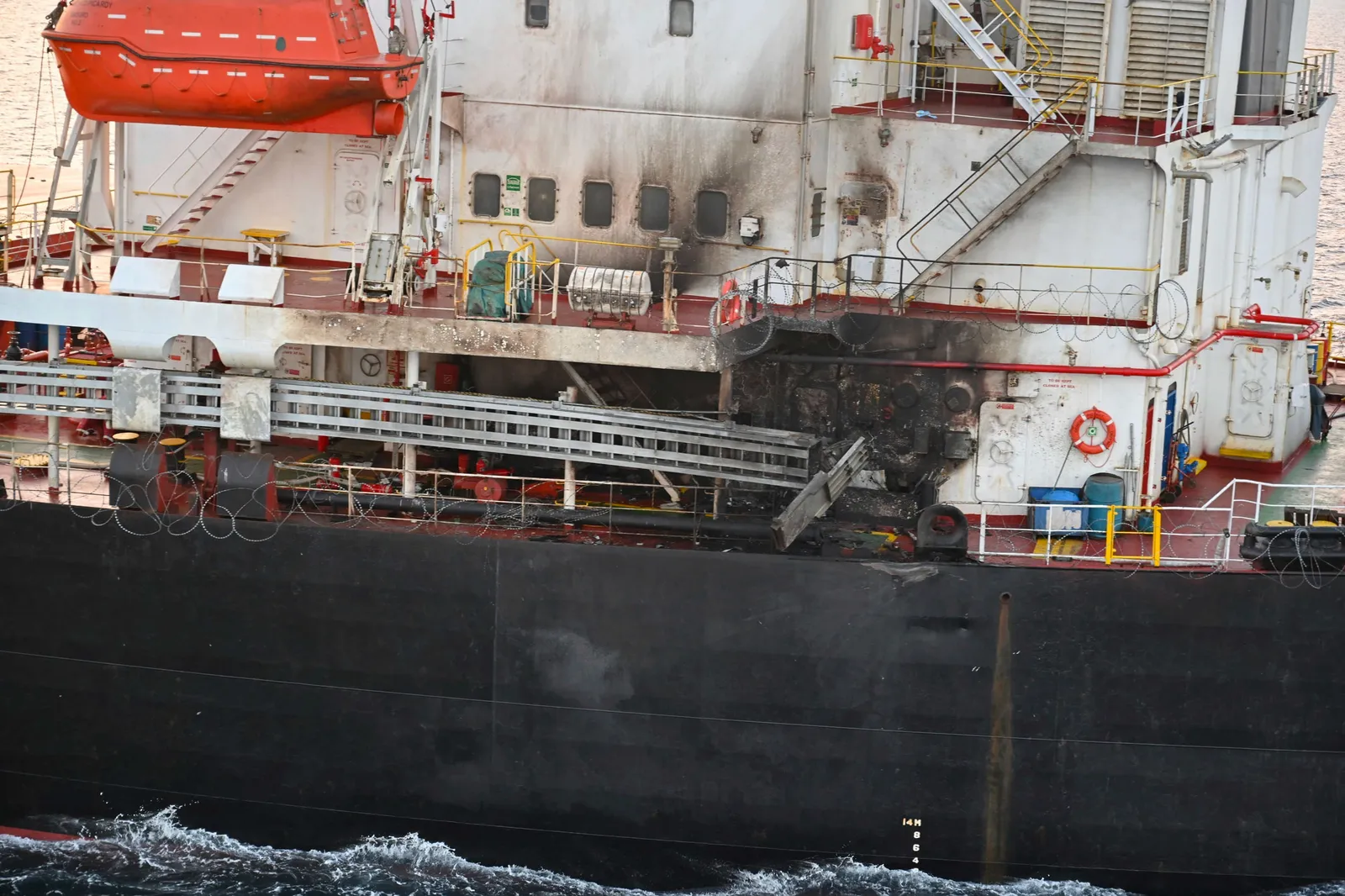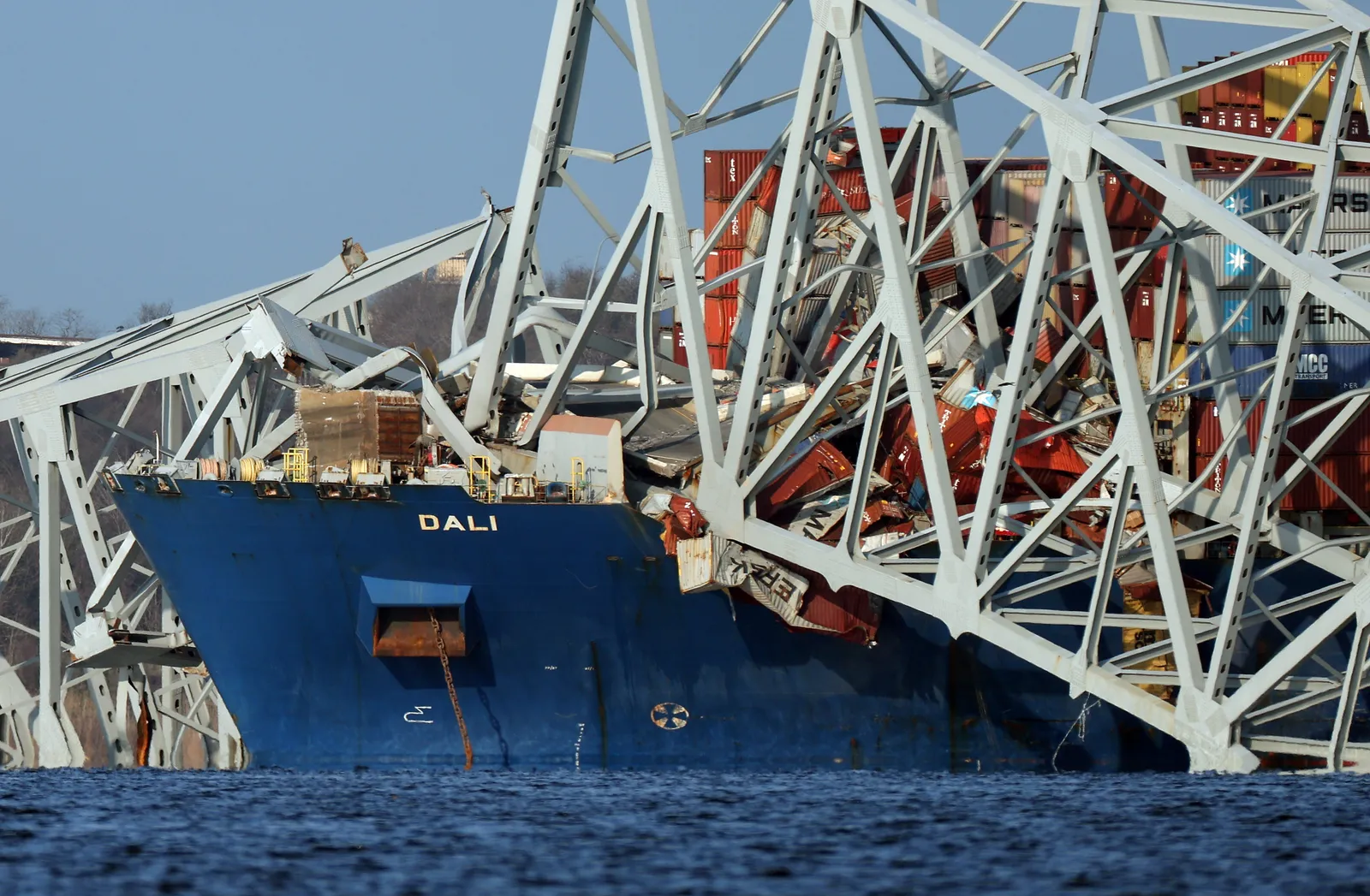Major logistics disasters spurred supply chain upheaval in 2024 — and the industry is still feeling the domino effects.
The shipping vessel Dali crashed into a major bridge in Baltimore, rocking supply chains as the Port of Baltimore shut down most of its operations.
Labor disputes led to several strikes, prompting carriers and shippers to implement new strategies and mitigation tactics to avoid areas on lockdown.
On top of the existing troubles, several natural disasters also took center stage later in the year, wreaking havoc on last-mile deliveries, distribution operations and port movements.
Here are 12 pictures outlining the events that critically changed the course of logistics supply chains in 2024.
Red Sea crisis


2024 had a tumultuous start after several Houthi-led attacks on cargo ships commenced in late 2023. Mediterranean Shipping Company and Hapag-Lloyd ships were directly affected, and major shipping lines began to avoid transit through the Suez Canal as a way to reduce risk.
In turn, several companies, including retail and apparel groups, began rerouting vessels. The unpredictable ocean shipping environment stemming from the Red Sea crisis has been a primary driver of higher ocean rates.
The collapse of the Francis-Scott Key Bridge in Baltimore

On March 26, a shipping vessel bound for Sri Lanka crashed into the Francis Scott Key Bridge in Baltimore. Ripple effects were felt throughout the supply chain for months as automakers and other shippers had to reroute shipments after the Port of Baltimore put a freeze on export containers. The port reopened in June after the wreckage of the bridge collapse was removed. However, the possibility of permanent diversions to other ports were on many leaders’ minds.
Taiwan earthquake

In April, a 7.4-magnitude earthquake rocked Hualien County on the east coast of Taiwan.
The earthquake spurred concern as Taiwan houses most of the world’s chip production. The Taiwan Semiconductor Manufacturing Company operates 14 sites on the island alone, with more construction developments on the way.
Even the smallest of delays can be detrimental to semiconductor supply chains. However, only some production lines were affected, and experts said the impact was likely to be “moderate.”
Dollar Tree distribution center destroyed by a tornado

Twenty-two deadly tornadoes blew through Oklahoma in April, leaving mass destruction in its wake. A Dollar Tree distribution center in Marietta was completely destroyed, but thankfully none of the 456 associates were harmed. To keep operations moving, Dollar Tree pivoted its network to ensure its 600 Marietta-serviced storefronts were still receiving deliveries.
Canada rail strike

August saw a lockout of rail union workers, shutting down Canada’s two major rail carriers. The strike occurred after the Teamsters Canada Rail Conference was unable to secure new labor deals with railroads Canadian National Railway and Canadian Pacific Kansas City. Canadian railroads transport more than 900,000 metric tons of goods daily, according to the Railway Association of Canada.
However, the labor strife had been long-running, and carriers were able to prepare contingencies to avoid major service disruptions. At the same time, the possibility of a work stoppage prompted the rail carriers to implement freight embargoes, which in turn affected U.S. freight connections.
ILA-USMX port strike

On Oct. 1, the International Longshoremen’s Association initiated a strike, shutting down several ports on the East and Gulf Coast after failing to reach a labor agreement with the United States Maritime Alliance. The strike lasted three days, with both parties reaching a tentative deal on wages and a contract extension until Jan. 15.
Since then, the ILA and USMX have been unable to make progress on issues in the master contract — automation seems to be the main concern. In December, president-elect Donald Trump voiced his support for the ILA’s stance against automation, stirring speculation about whether or not his support will impact contract talks come January.
Hurricane Helene


Hurricane Helene hit the Southeast in late September, leaving behind damaged major highways and railroads.
Truckers were heavily impacted as the storm washed out Interstate 40 — a key freight corridor — and other routes across the Southeast U.S.
Railroad CSX also saw major damage to its network, more than any other storm in the last 30 years, outside of Hurricane Katrina. Miles of tracks were either damaged or completely swept away. CSX will have to rebuild parts of its network, and anticipates construction to stretch into 2025.
Hurricane Milton

Shortly after Helene, the Category 3 storm Milton moved through eastern and central Florida in early October, bringing with it heavy rains and damaging winds. Port Tampa Bay halted inbound and outbound vessel traffic and closed shipping channels after the storm hit. The Jacksonville Port Authority also temporarily shut down operations in preparation of the storm. Trucking and parcel delivery routes were also impacted.
Canada Post strike


Canada Post workers shut down operations for more than a month as the government-owned carrier and the Canadian Union of Postal Workers failed to reach new contract agreements. Business resumed on Dec. 17 after the Canada Industrial Relations Board ordered employees to return to work.
The board's decision has bought Canada Post more time to reach agreements before a revised contract expiration date of May 22. If that fails to occur, shippers could be at risk for more disruption. During the most recent strike, on-time delivery performance plummeted throughout Canada as carriers instituted capacity controls to limit the surge of volume being diverted to their networks.








